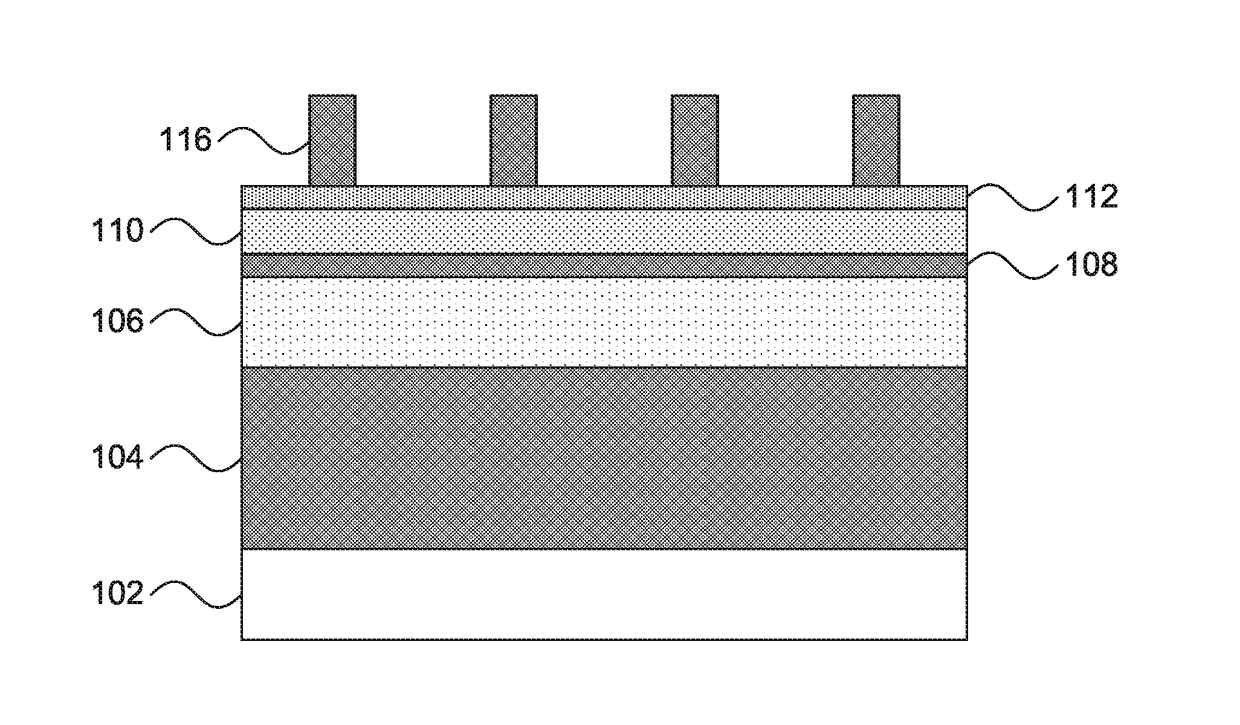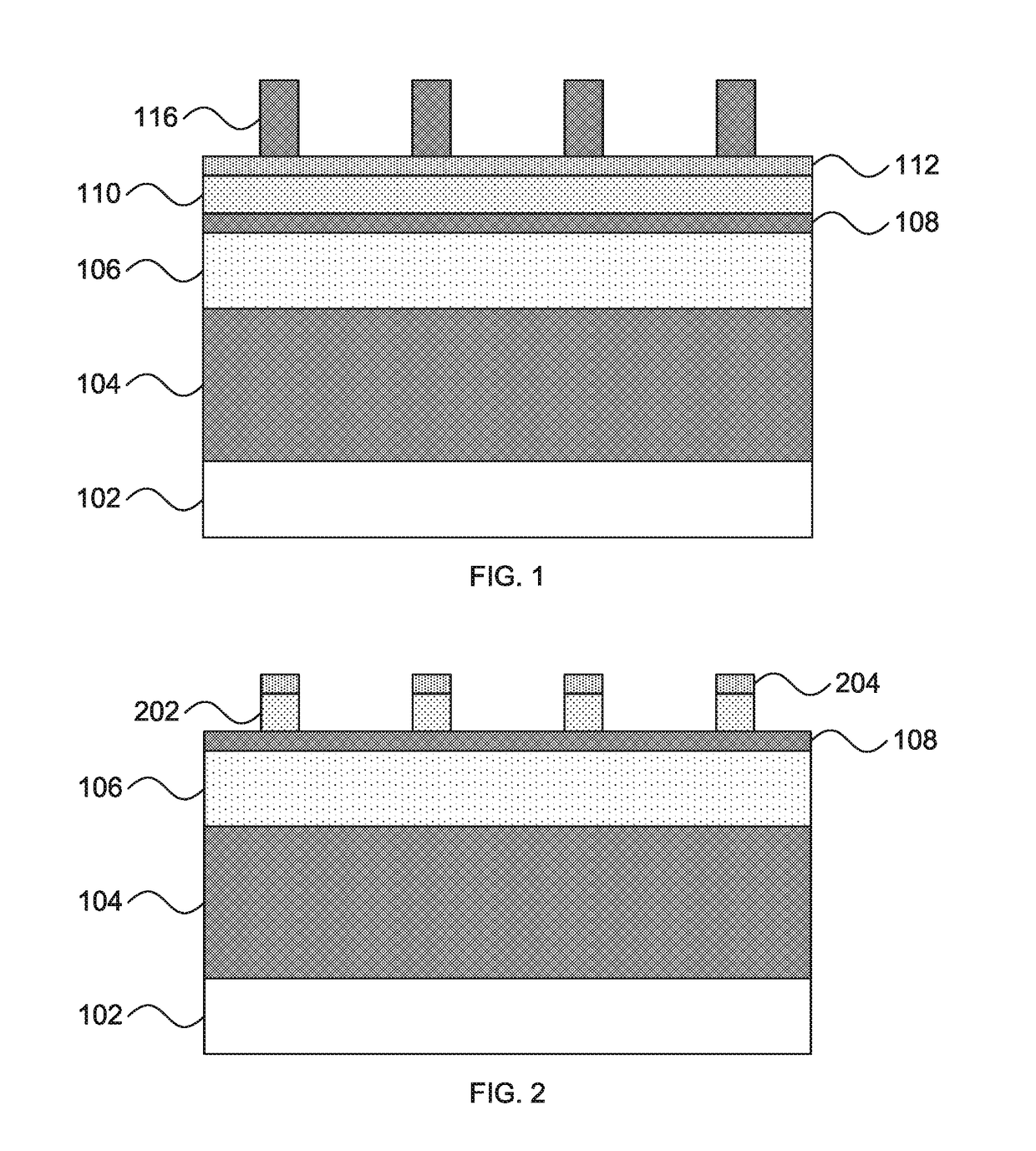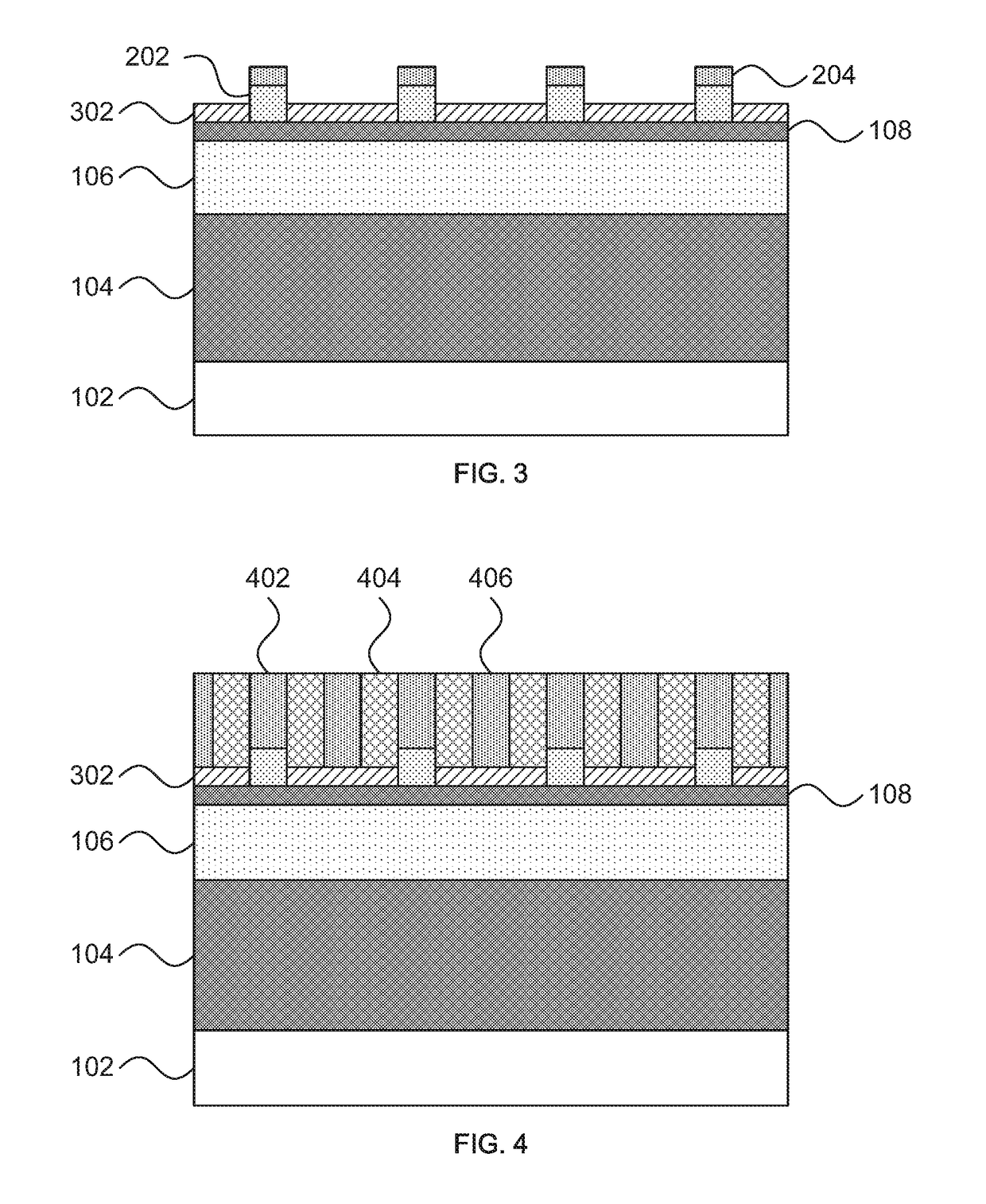Alternating hardmasks for tight-pitch line formation
- Summary
- Abstract
- Description
- Claims
- Application Information
AI Technical Summary
Benefits of technology
Problems solved by technology
Method used
Image
Examples
Embodiment Construction
[0027]Embodiments of the present invention provide a hardmask fabrication process that may be used for fin formation in semiconductor fabrication. The present embodiment forms hardmask fins of three different compositions that have mutual etch selectivity, such that a spacing between fins of the same type is large enough that lithographic masking errors will not interfere when selectively removing fins. This provides a tri-color alternating hardmask, where the three different “colors” represent the three different fin hardmask composition. Thus the term “color” is defined herein to refer to one particular hardmask composition.
[0028]The present disclosure therefore refers to “first-color,”“second-color,” and “third-color” materials and fins. Each of these “colors” can be etched selectively to the other two, making it possible to remove a fin of one color without damaging nearby fins of a different color.
[0029]Referring now to FIG. 1, a cross-sectional diagram of a step in forming tri...
PUM
 Login to View More
Login to View More Abstract
Description
Claims
Application Information
 Login to View More
Login to View More - R&D
- Intellectual Property
- Life Sciences
- Materials
- Tech Scout
- Unparalleled Data Quality
- Higher Quality Content
- 60% Fewer Hallucinations
Browse by: Latest US Patents, China's latest patents, Technical Efficacy Thesaurus, Application Domain, Technology Topic, Popular Technical Reports.
© 2025 PatSnap. All rights reserved.Legal|Privacy policy|Modern Slavery Act Transparency Statement|Sitemap|About US| Contact US: help@patsnap.com



